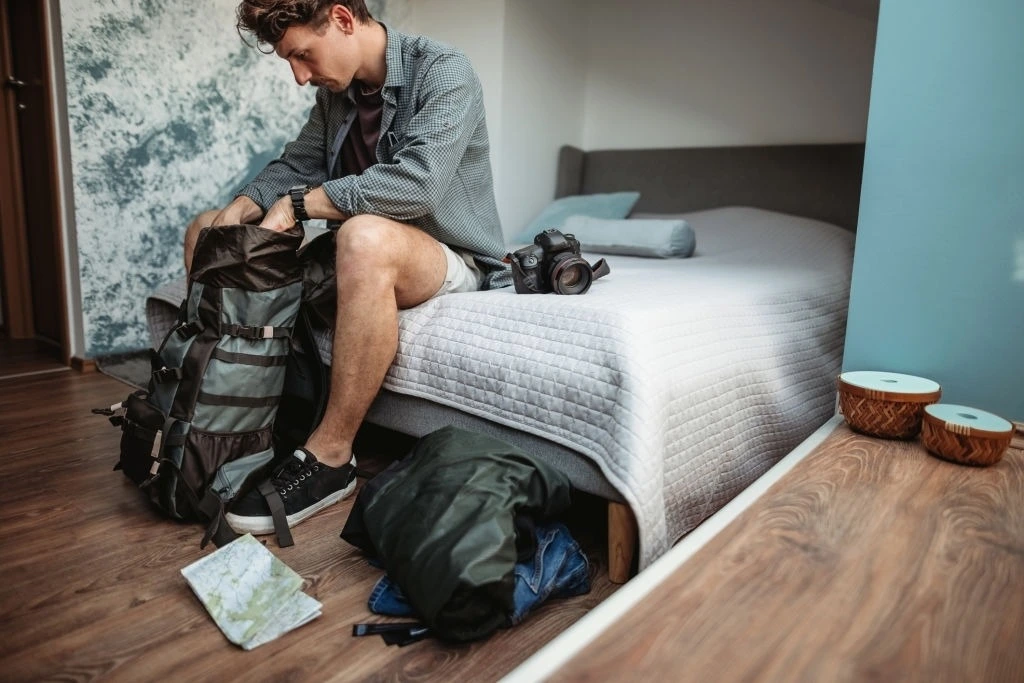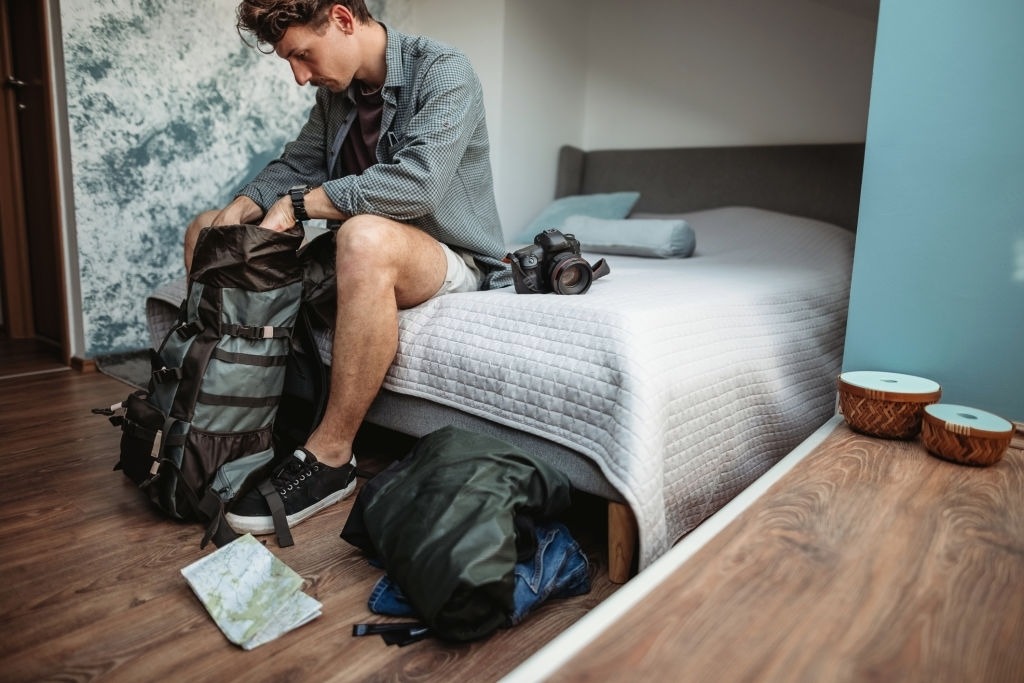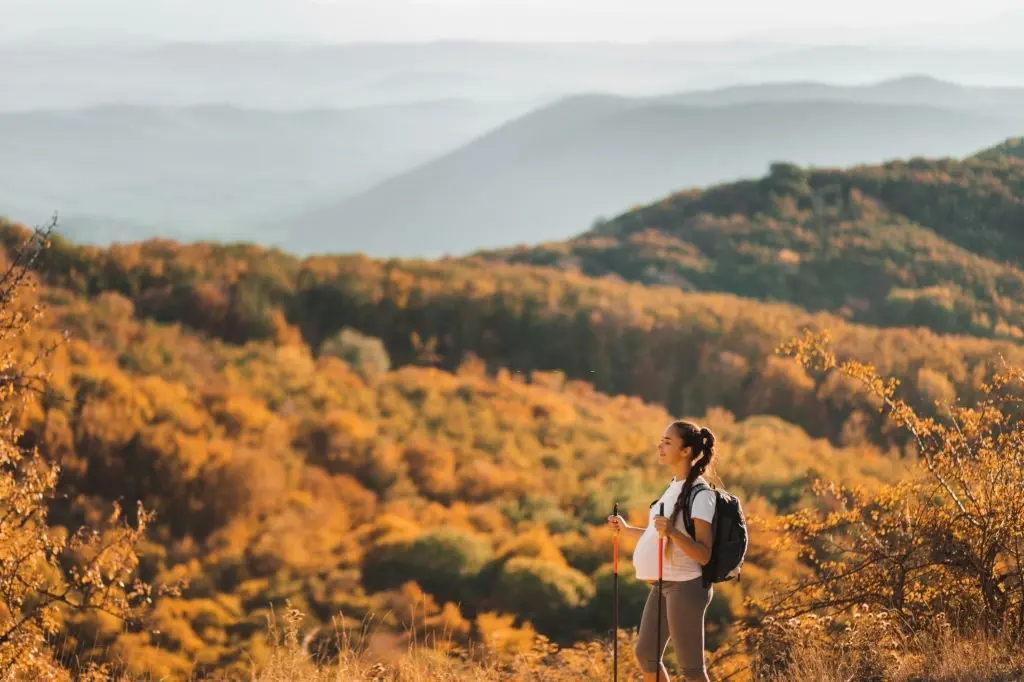Mountains are the epitome of nature’s beauty. They are magnificent and awe-inspiring. They touch the sky and are full of mystery and wonder. As humans, we have been drawn to mountains since the dawn of time.
But the mountains aren’t just the same as your established campgrounds. They aren’t even the same as your favorite hiking trail. They are a challenge that requires sufficient skill and knowledge so that you can conquer them. Honestly speaking, you will never reach the top if your body and mind aren’t hardened to tackle the ordeal.
In a more technical journey, the trip would certainly include basic training on how to traverse the mountain. If the mountains are snowy, then you need to look for a guide that will teach you the fundamentals of drifting in the ice and snow. But the physical preparation should be done months before the trip.
Here, you will learn the basics of mountaineering and other things that you need to learn about it.
Is Mountaineering Easy?
Many mountaineers would say that training is a must when it comes to mountaineering. If you don’t undergo prior training, you will never be allowed to partake in this endeavor.
So what does this mean?
Unlike simple trips to the campsite during the weekend, mountaineering is quite rigid. In fact, the term “hard” is an understatement for how difficult it is. Even a beginner’s route will challenge the physical endurance of your body. At the same time, it will also test your mental fortitude, which, by all means, is an essential aspect that every mountaineer should master.
Mountaineering requires physical strength, endurance, and, most of all, courage. It’s at this point that mountaineers begin to witness how dangerous this adventure can be. Many climbers’ stories contain harrowing tales, such as moments of peril and situations where they encountered a seemingly insurmountable path.
Furthermore, not all mountains are the same. Hence, the training that you did for a particular mountain might not be applicable to your destination. From the type of terrain, weather condition, and elevation, these factors can become burdens to your ascent.
Mountaineering is like treading a thin line. You need to be extra careful to ensure that you can reach the summit without sustaining injuries. Keep in mind that some adventures in the past led to fatal endings. So you wouldn’t really want to put yourself in the same position, especially if you are just after the thrill.
What Are The Potential Dangers That You Can Encounter?
There are lots of hazards in mountain climbing. That’s the truth to the matter. If it is safe and easy, then we wouldn’t have made this guide.
Certainly, stating these things aren’t meant to scare you. We highlight these potential hazards for your awareness. In turn, that will help you plan and train for your trip better.
High Altitudes
Any mountaineer, young or old, will tell you high altitudes can be dangerous. They can cause shortness of breath, dizziness, and nausea. It’s a common feeling that you’ll experience once you scale some serious heights.
Altitude sickness is no joke. It can lead to serious health concerns, such as permanent brain damage. The symptoms can be felt at 8,000 feet above sea level. Here, your body is deprived of oxygen, which could kill the cells in your brain and other organs.
There are different types of altitude sickness, all of which have varying degrees in the damage that they cause. A severe altitude sickness, for instance, manifests through noisy breathing, fever, coughing, and difficulties in breathing, even resting. These symptoms are tell-tale signs that high-altitude pulmonary edema is about to occur.
Extreme Temperatures
Mountaineering also exposes you to extreme temperatures. When the conditions are hot, you are prone to heat exhaustion and heat stroke. If it is the opposite, then you are at risk of hypothermia.
Of course, you can’t control the weather. Hence, it is you that will make the adjustment to avoid experiencing the symptoms of heat stroke or hypothermia. Furthermore, you will need to identify the symptoms of these conditions:
Heat exhaustion/heat stroke symptoms:
- Sweating
- Dizziness
- Headache
- Nause
- Confusion
- Skin dryness
- Losing consciousness
How to avoid:
- Find a shaded area to rest
- Remove layers of clothing
- Drink water and use a wet towel to cool the body
- Seek medical attention if needed
Hypothermia/frostbite symptoms:
- Shivering
- Light breathing
- Weakened heartbeat
- Confusion and fatigue
- Stiff joints and muscles
- Bluish/reddish skin
- Prickly feeling
How to avoid:
- Search for a dry and warm place to rest
- Remove wet clothing and wrap yourself in dry blankets and clothing
- Stop moving if your hands or feet are frostbitten
- Drink warm or hot water
- Seek medical attention
Natural Disasters
Mother Nature strikes the least you expect. Even the most seasoned mountain climber will never know when an earthquake or landslide will happen.
Of course, these things don’t happen frequently. But there’s always a possibility that they can occur. And most of the time, their repercussions are severe. On a climb, you might encounter any of the following natural disasters;
- Storms and hurricanes
- Avalanche and landslide
- Earthquake
Again, there’s no telling when these calamities will strike. But sometimes, your chances of being caught in one increase due to unplanned trips. For instance, if you decide to ascend during a typhoon season, the likelihood that you will encounter heavy downpours during the climb is high.
But of course, misfortunes happen. And once it does hit you, you better survive it.
Poor Visibility
When it comes to mountaineering, visibility is an important aspect. You need to see your surroundings so that you can climb safely and react to whatever situation comes your way.
But sometimes, external factors could cause you to lose visibility. For instance, heavy snow and rain will make it difficult for you to see what’s around you. Another cause is poor lighting; if you didn’t bring flashlights and headlamps with you, don’t expect that you can see in the dark.
Exhaustion is also a factor in this. It is hard to focus when your body is lethargic. Because of this, proper rest and nourishment in a mountain climb.
Animals
The thing is, most wildlife is not aggressive. They only respond to external stimuli. So what does this mean? This means that if you disturb or invade their territory, they will fight back.
You need to be careful in your movements so that you will not disrupt any habitat. You need to double your caution in areas where human traffic is low. There’s a good chance that the animals there aren’t used to human presence.
Furthermore, you are attracting animals in your direction if you are bringing something odorous, such as food and perfume. Hence, you need to pack these items tightly so that their scents won’t cause a possible dangerous encounter.
What’s The Difference Between Hiking And Mountaineering?
Another thing that you need to know is the difference between mountaineering and hiking.
In a nutshell, you can treat these two endeavors differently. While they appear to be the same, mountaineering is more specific than its counterpart. At the same time, it is evident that mountaineering is more tedious and rigorous. It requires mastery of certain skills, such as skiing and rock climbing.
These things aren’t often found in simple hikes. After all, hiking would just require a person to reach a particular point. Trekking and peak-bagging are among the variants of hiking, by the way.
In contrast, mountaineering is an extensive adventure. It requires technical skills, as you are going to ascend harsh and rigorous mountains. There are a lot of risks involved in mountaineering, which is the very reason why the level of preparation in this endeavor is high.
The goal of hiking is to have fun or complete a particular trail. It doesn’t have pressure embedded in it. There’s no time limit, either. On the other hand, mountaineering has specific objectives. Therefore, mountaineers have to dedicate themselves to the art.
So what’s the most common goal of mountaineers?
Of course, that’s the summit. It doesn’t change at all. Some even push themselves to the limit and put their lives on the line.
How To Train For Mountaineering?
As mentioned, training for mountaineering is essential. It is required and should never be discarded. Every mountain is different, so you might need to customize your training based on the type of adventure you are going to.
Here are the fundamentals for mountaineering training:
Assessing Your Fitness
You need to make sure that you are capable of mountaineering. This means that you would require to get a doctor’s approval or certification from a licensed trainer. Counseling related to physical capabilities is important to ensure that you can complete the journey.
Assessing The Level Of Physicality Of The Climb
Next, you need to understand how rigorous the climb will be. Mountaineering is always a test of endurance. So you can always see it as a type of high-level hiking, where you need to haul heavy loads, ascend difficult terrains, and survive high altitudes. With that being said, one mountain is different from the others. Hence, you have the requirements of the particular climb so that you can prepare for it.
Get Training
Honestly, you can train for mountaineering by yourself. You can find several books and YouTube videos that will guide you. However, keep in mind that having a personal trainer is much better, given that they can provide essential recommendations so that you can remain fit and motivated. They can also give you a customized plan. It may cost more, but the benefits are worth it.
Have A Training Plan
Mountaineering requires a lot of skills and expertise. You would need to learn these things so that you ascend the summit. Here are some of the essential training regimens that you should undergo.
- Cardio training – This will boost the strength of your lungs and heart
- Interval training – Interval exercises elevates your ability to consume more oxygen every breath you take
- Endurance and strength training – These exercises will give you the ability to carry heavy loads and withstand the rigidity of the climb
- Flexibility and balance training – You wouldn’t want to trip over in your trip
- Hiking – It gives you a preview of what to expect during the climb
Conclusion
You have to keep in mind that mountaineering isn’t a simple endeavor. It requires rigorous practice and training. In fact, some mountaineers have to train for years, especially if they have to deal with extreme summits, such as Everest. If you are a starter, you can pick a beginner’s terrain so that you will be able to see how far you can go.
Best of luck with your adventure!



